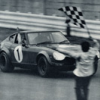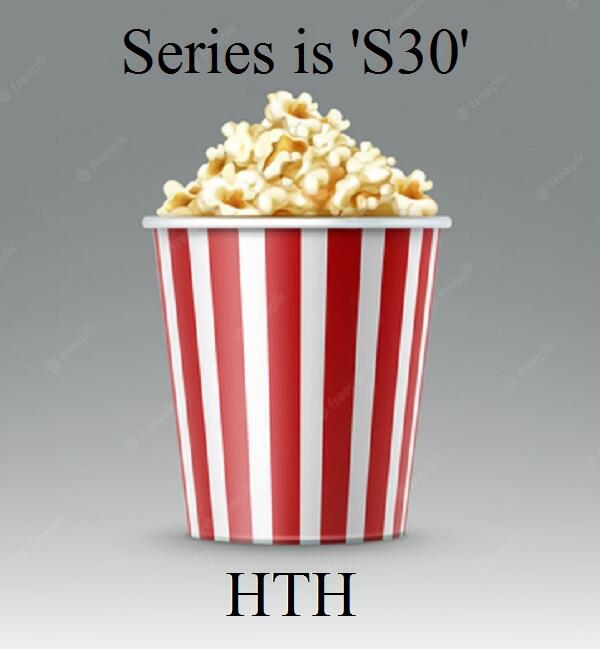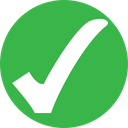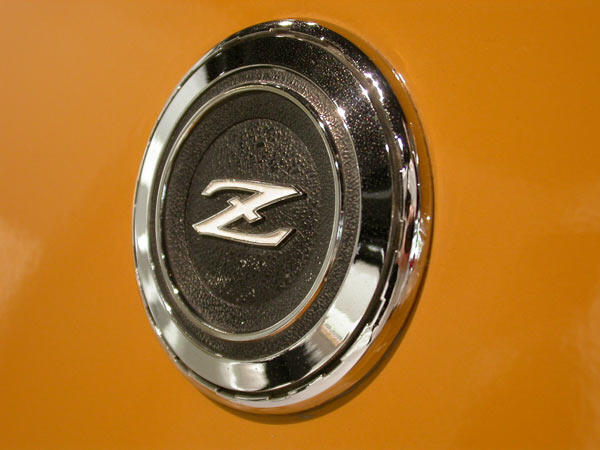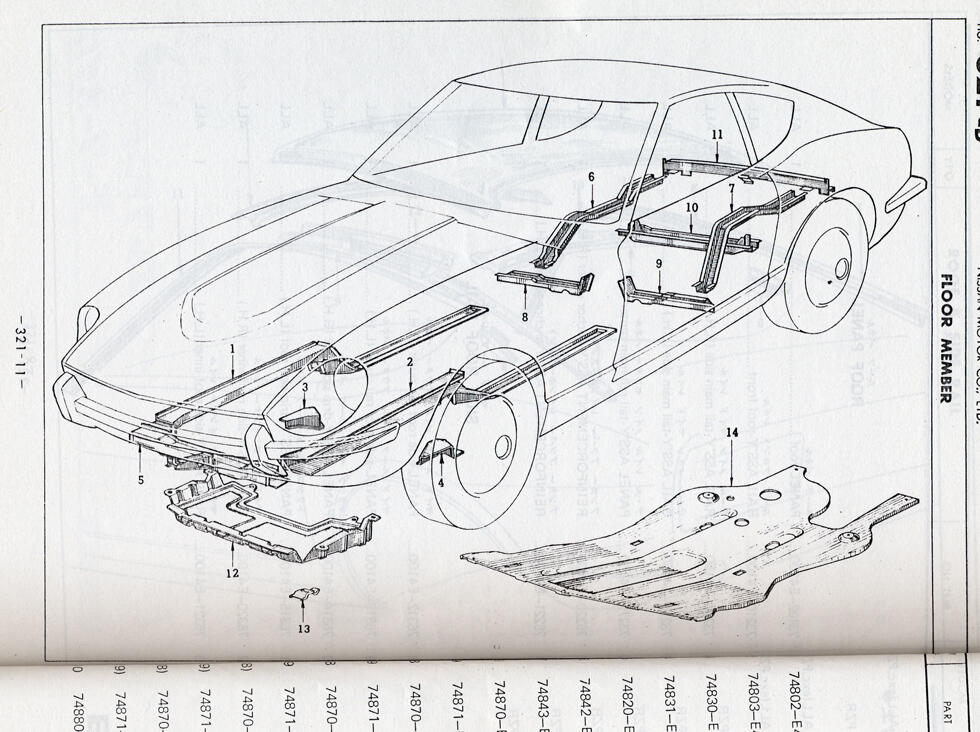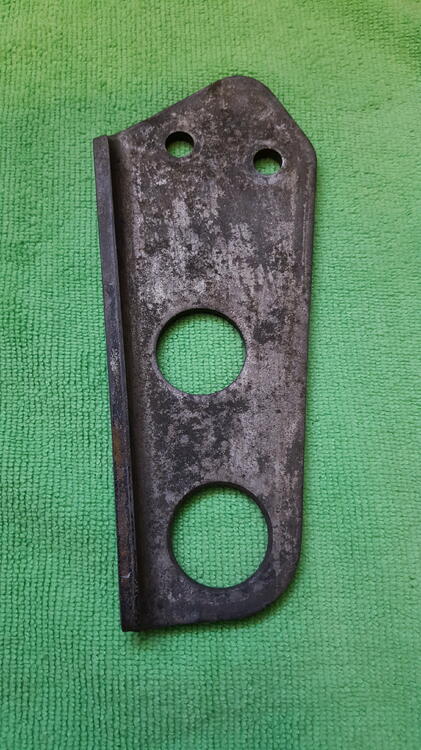Everything posted by HS30-H
-
Z's on BAT and other places collection
With what? 'Series' - according to Nissan Motor Co. Ltd. Japan - is 'S30'. Anything else is just America talking to itself.
-
Z's on BAT and other places collection
- 1970 240Z Works Rally - the road to restoration
At speed, it would act something like a surfboard. I think there's a skill to driving through deep standing water where you create a sort of 'bow wave' effect which pushes the water out in front of the car at the right speed to stop it coming over the top of the car? Some of the later cars had big rubber flaps attached to the corners of the front bumper to help with this.- 1970 240Z Works Rally - the road to restoration
Hi Kats, What was the date of the interview? I don't believe there was anything like that on the Works cars before 1972, and I honestly don't ever recall seeing anything of that nature in *any* of the Works 240Zs. It's hard to imagine how such a system could operate without big changes to the structure of the car, especially in the cowl and firewall area, and any ducting joining the cabin to the carbs or injection would easily be visible in the engine bay. Never seen anything like that. I wonder if it might be a case of misunderstanding between Namba san, Wakabayashi san and the journalist involved? The only thing I can think of is the modified cabin blower system used on the 1972 RAC Rally and 1973 Safari Rally cars, which was fundamentally different than the stock item. They turned the uprated fan and motor through 90 degrees and added some huge filters and ducts to the system. On the Safari Rally - if the weather was dry - they had huge problems with 'Murram', the fine red dust that forms many of the road surfaces on the route. It got everywhere, clogging up instrumentation and mechanisms. I should imagine the modified ventilation system was part of dealing with that. It's not a very good shot, but here's my view from the passenger seat of '7924', the 1973 East African Safari Rally-winning car (Shekhar Mehta/'Lofty' Drews) which had previously used by Rauno Aaltonen on the 1972 RAC Rally. You can see the 'clocked' fan and housing and some of the big ducting that was part of the system:- Z's on BAT and other places collection
What a strange take. I just checked for a snapshot on how many auctions were active TODAY on bringatrailer.com and the number was 698. The lots range from fairly regular, accessible and low value to top-end rare and high value with everything between. Its a veritable microcosm of the automotive world. The demographics of the winning bidders will be pretty much the same demographic as that of the wider automotive world, as will the demographic of the sellers. I don't see anything particularly weird or suspicious about it. "Millionaires who like to burn money frivolously"? These are often the very same people who keep the artisan end of the classic car industry in business. If they are spending money in that sector, I'm happy. "Dealers hoping to make a profit"? And what's wrong with that? Farmers hoping their crops are successful, Doctors hoping to cure their patients. Whatever next? Yes, just like in any market there will occasionally be shenanigans. It's the way of the world. Bringatrailer.com is no better or worse than any other portal in that respect. But a 1971 PS30 Fairlady Z432 selling for a price that's pretty much in line with its market value and location seems to have caused some consternation due to the nature of one hammer-blow bid. I find the reaction to that bid more surprising than the bid itself.- Z's on BAT and other places collection
- Z's on BAT and other places collection
LOL. OK.- Z's on BAT and other places collection
So why are you suggesting that he overpaid? People who know what they are talking about reckon the car sold for around the car's market value in USD for a car located in the USA. I'm one of them. In fact, knowing the specific car as I do, I think it was a good buy. Again I'll say that I agree with you that his bidding tactics were odd, but you can't base your idea of true value on the underbid (what was it, 130k?). By whacking in a 250k bid so early he may well have trounced any number of people who were willing to go higher than 130k but not necessarily as much as 250k. So, let me ask you, what do you think the "correct market value" of that car is?- Z's on BAT and other places collection
Judging by what's on the table, prepare for trouble. That cat has plans.- Z's on BAT and other places collection
Shipping the car to Japan would cost money. Import taxes and duties would be payable and getting the car inspected and road-registered would also cost money. No guarantee that the selling owner had any current connections in Japan to handle that for him (especially since he was using a dealer to sell the car on BaT on his behalf) and anybody doing anything for him on the Japan side would likely be charging him for it. That's why I said the car - being in the USA - is 'out of context'. People - including yourself - seem to be amazed that the car has been bid to 250k USD, but similar cars are changing hands for more in Japan. See above. I just don't think you are familiar with PS30 values. Over the last few weeks I was contacted by a dealer in the Far East (not Japan) who had been tasked with sourcing a PS30 for a collector client. He asked me my opinion on several PS30s that are currently on the market in Japan. He wanted an "investment grade" car. ALL of them were priced at equivalent to more than 250k USD at today's exchange rates. A couple of them nearer 400k.- Z's on BAT and other places collection
'Interesting' - if not unexpected - to see comments on the auction where people were calling the car a '240Z'. Clearly a legacy of what was presented to them as 'fact' over the last 53+ years. I think this car is a good choice for anyone who wanted a 432. It is MILES better than the so-called "1969" 432 which sold at Mecum's Monterey sale last year for more money. I have an inkling that the car in question may soon end up in a Singapore-based collection, if my suspicions are correct...- Z's on BAT and other places collection
I'll admit that I too find it a strange way to approach an auction, but second-guessing that bidder is not going to get us a firm answer as to why he did what he did. The plain fact is that the 250k USD bid is about right or slightly low for the car in its context, being away from its premium market (Japan) and needing a little work to bring it up to really nice condition, mainly underneath. I don't think he could have "saved 10s of thousands of dollars" by bidding in lower increments and in fact he may well have saved himself a fair chunk of money by discouraging other potential bidders who would otherwise have been pulled along by the more usual last-minute bidding war scenario.- Z's on BAT and other places collection
Did you bother to read any of the auction details? "Older 1980s restoration by St. Yves Motor Sales, with attention to factory details and specifications, using OEM parts when available." So it was restored at least 35 years ago, and for their own collection.- Z's on BAT and other places collection
The car was 'refreshed' (not necessarily fully 'restored') in Japan back in the early to mid 1990s. The panel was most likely replaced around that time as it was certainly installed in the car by 1997 when it was featured in Nostalgic Hero magazine's Vol.64 with a 6-page feature and centrefold. I believe at the time of refreshing the car that the correct RHD-layout panel was difficult to find whilst the AirCon-specific panel was still available from Nissan. The story may be as simple as that. I know that Nishi san of Revive Jalopy was involved in supplying parts for the car and it may have been the case that he couldn't get the PS30-specific panel. Easily put right today with the availability of reproduction panels and sticker sets. I see it as a fairly trivial detail. There are many other small details on the car which are not 'correct', but I don't believe the previous owner In Japan ever claimed the car was any kind of concours example. He was happy to modify it to his own taste (4-point aftermarket roll bar, Weber carbs, Takahashi exhaust manifold, oil cooler, Compe steering wheel and leather gear knob etc) and did plenty of miles in it* *By the way, the Bring A Trailer auction description mentions "33k Kilometers (~21k Miles) Shown." When the car was featured in that December 1997 issue of Nostalgic Hero magazine, mileage was quoted as being already 84,000 Km. I'd say it's been around the clock at least once. Good! Edited to add: The twin parking lamp switch on the console was still present in the car when I last saw it, but now appears to have disappeared - replaced with a blanking plug. I'm wondering if the whole parking lamp system was deleted when it came to the USA? The correct switches are quite hard to find.- Z's on BAT and other places collection
LOL. I'm not wearing any knickers, darling. Why are you talking about "later badges" then? The "later" quarter emblems were all vented (to match the vented quarters they were mounted to) so, QED. You didn't know what you were looking at, did you?- Z's on BAT and other places collection
The car has been in the USA for the best part of ten years now. Plenty of time for that to have been addressed by the apparently much vaunted 'Collector' and 'Expert' who is selling it, don't you think?- Z's on BAT and other places collection
You might want to put your spectacles on and take another peep. The quarter emblems on the car are the correct, early 'Z' type without vents as fitted to all solid-quarter domestic cars. They are not vented.- Z's on BAT and other places collection
The car is - clearly - modified. Stock fitment on this car would have been triple N40PHH Mikuni-Solex carbs. The triple Weber 45 DCOE-9 carbs were a Nissan Sports-endorsed upgrade (Nissan even gave a part number for the kit) of the period. I have 45 DCOE-9s on both of my S20-engined cars. It is not all that unusual. No. 'Correct' (stock) fitment would have been the same wooden 5-speed knob, as seen on other 5-speed equipped cars of the period. The shift knob currently fitted is the 32865-RN200 'Datsun' branded, leather-bound NISMO anniversary edition item. Matching the... ...of the NISMO anniversary edition re-pop 'Datsun Compe' steering wheel.- My two swiss S30Z Fairlady Restoration build thread
In fact the model represents a 1971 Fairlady 240Z-L 'Deluxe' variant (factory code 'HS30-D') with its stock L24 engine.- Belly pan front valance.
The E7200 full length engine bay undertray/bellypan was intended to be used in race conditions, where sustained high speeds were expected. They are not really suitable for road traffic conditions in hot weather. The other factor is that the E7200 was aimed primarily at S20-engined cars with a crossflow head design, and which have inherently better cooling systems and less fuel percolation issues than L-gata engines where the inlet is directly above the exhaust.- Belly pan front valance.
France, The Netherlands, Germany, Belgium, Portugal, Switzerland, Scandinavian countries are all LHD and all received cars with the factory front spoiler.- Belly pan front valance.
Only UK & most mainland European markets. Not seen on Australian, NZ or Japanese market cars.- Belly pan front valance.
The captive nuts in the front apron were primarily intended to be used to attach the (urethane) factory spoiler, fitted as standard equipment to UK & European market models. The quarter valance pieces also had captive nuts. *28 = 98300-E8100 ASSY-FRONT AIR SPOILER *6 = 62600-E7201 ASSY-PANEL FRONT APRON Those same captive nuts allowed attachment of the full engine bay undercover, as fitted to the 432-R model and homologated in the JAF GT-011 papers: *14 = 98200-E7200 COVER-under (Omori Sports Corner)- S30 Frame rail thread
HS30-H model Fairlady 240ZG went on the market in Japan around October 1971, so that would correspond.- S30 Frame rail thread
That's the attachment point for the towing bracket specific to the HS30-H model Fairlady 240ZG. The stock short nose towing bracket could not be used on the 240ZG (the lower section of the Grande Nose covered it) so the factory created a 240ZG-specific towing bracket which allowed the tow rope to pass through the nose: - 1970 240Z Works Rally - the road to restoration
Important Information
By using this site, you agree to our Privacy Policy and Guidelines. We have placed cookies on your device to help make this website better. You can adjust your cookie settings, otherwise we'll assume you're okay to continue.




